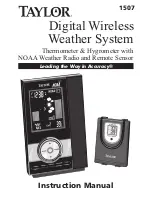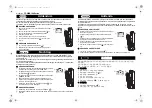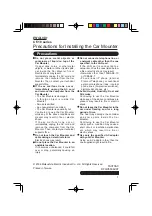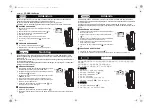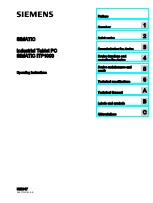
6
This puts the transmitter in TEST mode
.
An LED indicator light flashes
each time it transmits:
• The LED immediately flashes once to show that the light itself func-
tions.
• The LED flashes each time the transmitter broadcasts a signal, which
should be every 2.5 seconds.
If the LED flashes only once and then remains dark, there is a problem
with the transmitter. See “contacting Davis Instruments” on page 10.
If the LED flashes repeatedly but your console isn’t picking up a signal
anywhere in the room, it could be related to one of the following causes:
1. The DIP switches were not correctly set on the transmitter.
Review the procedure on page 3.
2. The ID was not correctly set on the console/receiver.
Review the procedure on page 4.
3. Reception is being disrupted by RF (radio frequency) interference.
4. There is a problem with the console/receiver.
See “Contacting Davis Instruments” on page 10.
Note: Remember
to
turn the Test DIP switch OFF
when you’re finished testing wireless transmission.
If it is left ON, the blinking LED will reduce battery life significantly.
Choosing a Location for the Wireless Temperature
Station
Locate the station’s temperature probe where it will not be exposed to
sources of heat or cold that could distort temperature measurements.
The temperature probe is waterproof and may be submerged. It can be used
to measure soil or water temperature. The transmitter shelter is weather-
proof, but not waterproof. Do not submerge the transmitter shelter.
Consider these factors when locating the temperature probe to measure air
temperature:
• Place the probe where it will not be in direct sunlight and where it will
have limited exposure to reflected sunlight.
If possible, place the sensor at least 5' (1.5 m) from any surface which is
exposed to direct sunlight.
• Limit the probe’s exposure to night sky.
The temperature probe will cool down faster than the surrounding air.
Inaccurate temperature readings from exposure to sunlight and night sky
are due to radiation effects. These effects can be minimized by placing
your temperature probe in a Radiation Shield #7714.













